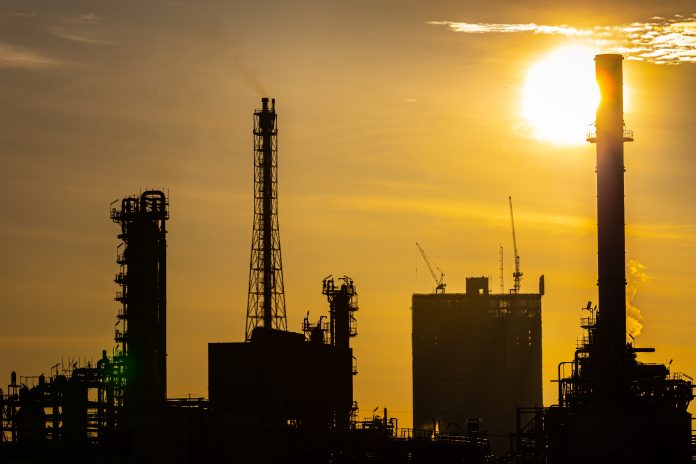Here, NES Global Talent takes a look at the work of four major oil and gas projects that will support the UK energy industry for years to come and provide hundreds of job opportunities for skilled engineers
Oil and Gas production is responsible for supporting over 300,000 jobs in the UK and it is estimated the industry will need to attract a further 25,000 new people by 2025. With the North Sea on our doorstep, the largest source of European Oil & Gas, there’s a variety of huge projects that will be responsible for attracting a large number of skilled professionals over the next 5 years.
With a wealth of job opportunities available in the UK’s Oil & Gas sector, here are some of the largest current projects in the UK:
Located in the North Sea, 150km off the coast of Shetland, the $7 billion Mariner Project is expected to produce more than 300 million barrels of oil over the next 30 years.
The area was discovered in 1981, remaining untouched for decades due to the complex challenges presented by the reservoir. It wasn’t until 2007, then acquired by Equinor, that ways of tackling the difficulties of the Mariner field put in place and the project’s development concept was revealed in 2011 with the final investment decision made in 2012.
Production started in August 2019. The field currently employs over 700 people both onshore and offshore and with production set to last until 2050 it promises to provide a significant number of jobs for many years to come.
Located in Fawley, Hampshire, the refinery sits on Southampton water and is currently the largest oil refinery in the UK.
With the refinery processing over 20 different crude oils a year, Fawley is not only the largest oil refinery in the UK but one of the most complex in Europe. The complex nature of operations requires skilled operators, engineers and planners to work collaboratively with cutting edge technology in order to meet the demands of an intensely competitive market. To meet the skills demand, the refinery currently employs an estimated 2,300 people.
Handling approximately 22 million tonnes of crude oil a year and around 2,000 ship movements, Fawley is providing 20% of the UK’s refinery capacity.
Some of the greatest challenges the refinery has faced in recent years have been the changes to the specification of transport fuels. The switch from leaded to unleaded petrol and the increased demand for biofuels has led to major investment in new units and upgrades to the existing refinery units, all of which has created further job opportunities for Downstream engineers.
The Western Isles Project will develop two discovered oil fields called Harris and Barra in the Northern North Sea, 160km east of the Shetlands and 12km west of Tern field.
It involves a subsea development of at least five production and four water injection wells tied back to a new build floating production, storage and offloading vessel (FPSO) with oil export using shuttle tankers.
UK Government sanction was granted in December 2012, drilling began in 2013 with subsea installation in summer 2014 and FPSO installation expected at a later date. Plateau production is expected to be around 40,000 boepd, adding more than 30,000 boepd to current UK production. The estimated field life is 15 years.
The project will ultimately deliver 40,000 barrels of oil a day, helping secure the UK’s future energy needs. Once operational, the development will bring hundreds of new oil and gas jobs and create valuable opportunities for UK companies.
The Rosebank project followed an oil and gas discovery at the offshore Rosebank/Lochnagar well in the Faroe-Shetland Channel close to the UK/Faroes median line and 126 km from the nearest coastline (Esha Ness on Shetland). The well, located in 3,600 ft of water and with a total depth of 12,153 ft, encountered two oil and gas accumulations.
The Rosebank Palaeocene reservoir is long and shallow, measuring 20 km in length and 5 km wide; the discovery could hold 530 MMbbl of recoverable oil of quality ranging between 27° API and 36° API.
It comprises oil and gas-bearing sandstones interbedded with layers of volcanics, proven in each of the four wells drilled to date. The geological make-up causes seismic imaging difficulties, making it hard to distinguish between reservoir, shale and volcanics.
The field will be developed by a turret moored FPSO, which will be able to produce 100,000 barrels of oil and 190 million standard cubic feet of natural gas per day, complemented by a storage capacity of 1.05 million barrels of oil. The 99,750-tonne FPSO will be built under the NORSOK standard. The development will comprise 14 wells, in four to six subsea clusters, tied back to a ship-shaped FPSO, located around 6km away.
This significant engineering feat will utilise a flexible riser system and include a 16-inch 236km gas export pipeline connecting Rosebank to the Shetland Islands Regional Gas Export line and on to St Fergus. Due to the enormity of the project, the field will be developed in up to three drilling stages, with drilling taking place from four drill centres.
It’s likely that seven oil producers and seven water injector wells will be drilled in phase 1, whereas phase 2 will see six oil producers drilled with one or two water injectors, and finally phase 3 development will consist of just one or two gas production wells. The total oil production from Rosebank is expected to peak at 98,198 b/d in 2019, whereas total gas production is expected to peak at approximately 3.8 million scm/d in 2022. It goes without saying that this project offers an enormous amount of job prospects.











